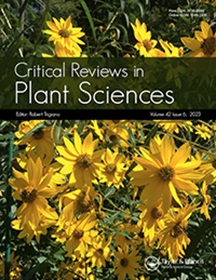Photosynthesis in Carnivorous Plants: From Genes to Gas Exchange of Green Hunters
IF 4.9
2区 生物学
Q1 PLANT SCIENCES
引用次数: 2
Abstract
Abstract Although carnivorous plants can obtain organic carbon from their animal prey, they rely on photosynthetic assimilation of carbon dioxide. All investigated carnivorous plant species assimilate carbon dioxide using the C3 pathway, with the rate of photosynthesis (AN) being lower in comparison to noncarnivorous species. The reasons for low AN in carnivorous plants are (i) low nitrogen and phosphorus content in the soil and leaves and (ii) the cost of carnivory in their modified leaves (called traps). The cost of carnivory includes several anatomical, ultrastructural, and biochemical adaptations of traps, which favor nutrient uptake from prey over photosynthetic assimilation. However, after digestion, nutrient uptake from the prey can increase AN, growth, and reproduction. In carnivorous plants with active trapping mechanisms, spatiotemporal changes in AN and respiration rate (RD) occur during prey capture and digestion, owing to the interplay of electrical and hormonal signaling. Approximately 7.5% of carnivorous plants are aquatic plants, with demands for survival being different from those of terrestrial plants. The alternative mode of nutrition in carnivorous plants is reflected in their plastid genomes, which resemble the reduced plastomes of parasitic and mycoheterotrophic plants.食肉植物的光合作用:从基因到绿色猎人的气体交换
虽然食肉植物可以从猎物身上获得有机碳,但它们依赖于二氧化碳的光合作用同化。所有研究的肉食性植物都通过C3途径吸收二氧化碳,与非肉食性植物相比,其光合速率(AN)较低。肉食性植物氮磷含量低的原因是:(1)土壤和叶片中氮磷含量低;(2)肉食性植物改良叶片(称为捕虫器)的成本高。食肉动物的代价包括陷阱在解剖学、超微结构和生化方面的适应,这些陷阱更倾向于从猎物那里吸收营养,而不是光合作用同化。然而,在消化后,从猎物中摄取营养物质可以增加AN,生长和繁殖。在具有主动捕获机制的食肉植物中,由于电和激素信号的相互作用,在猎物捕获和消化过程中,AN和呼吸速率(RD)发生了时空变化。大约7.5%的食肉植物是水生植物,它们的生存需求与陆生植物不同。食肉植物的替代营养模式反映在它们的质体基因组中,它们类似于寄生和真菌异养植物的减少质体。
本文章由计算机程序翻译,如有差异,请以英文原文为准。
求助全文
约1分钟内获得全文
求助全文
来源期刊
CiteScore
12.90
自引率
1.40%
发文量
15
审稿时长
>12 weeks
期刊介绍:
Critical Reviews in Plant Sciences focuses on presenting in-depth and up-to-date reviews of timely and/or cutting-edge subjects in the broad discipline of plant science, ranging from molecular biology/biochemistry through the areas of cell biology, plant pathology and physiology, genetics, classical botany, and ecology, to practical agricultural applications. Articles in the journal provide an up-to-date literature base for researchers and students, pointing the way towards future research needs. The journal is also a significant source of credible, objective information to aid decision makers at all levels.

 求助内容:
求助内容: 应助结果提醒方式:
应助结果提醒方式:


